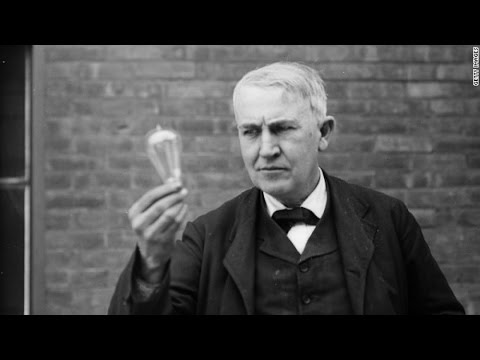No, not that F word – shame on some of you. Fail – it’s a four-letter word that we’re all too familiar with. We worry about doing it, do everything we can to avoid it, and when it happens it makes us feel downright awful about ourselves. It doesn’t matter what we fail at either. It’s all the same – the end results are usually a whole lot of negative self-talk, maybe even a few swear words and possibly a pint of ice cream or a whole bag of chips.
Worse yet, we give up on the thing we felt we were meant to do. What’s the deal, anyway? None of us are perfect, but we think we have to be. Are we really terrible because we failed at something? Does one slip-up justify giving up the ship?
In the fall of 1878, a year after his invention of the phonograph had grabbed national head lines, 31-year old inventor Thomas Edison boldly told the press that within six months he would invent an incandescent light bulb for home and commercial use. A group of wealthy investors, including William H. Vanderbilt, loaned Edison $50,000 to establish the Edison Electric Light Company, and a team of a dozen engineers and technicians began work in Edison’s laboratory in rural Menlo Park, New Jersey. Edison’s challenge was to find an inexpensive filament material that would burn for hours.
By spring, the team had tried numerous experiments but was no closer to their goal. They tried platinum, but it was too expensive, then fishing line and cotton string soaked in tar, before moving to plant fibers. Every plant filament imaginable was tried – coconut hair, boxwood, hickory, cedar, oak, flax, and bamboo – the list was endless.
By late summer 1879, although Edison provided rosy reports about his progress to his lenders and the press, his team was struggling to find the right filament. Edison drove them relentlessly. The master of catnaps, it was said the man could sleep anywhere and anytime; Edison prided himself in only needing three to four hours of sleep. He worked tirelessly for 16 to 18 hours a day, often sleeping on his work bench.
After several thousand experiments, one of the young lab assistants asked Edison how he could keep going after thousands of failures and suggested they give up on the invention. Edison scolded the young man, explaining that they had not failed thousands of times, but instead had succeeded in finding many combinations of filaments that would not work.
On the evening of October 22, 1879, Edison and his team gathered around to test yet another light bulb. The filament, a carbonized cotton, glowed for almost 14 hours with the brightness of 30 candles. While they deemed the experiment a success, 14 hour filament life was still not commercially viable. Edison filed for a patent for his electric lamp in early November, and the team continued their search. In January 1880, Edison received Patent No. 223,898 – New Type Edison Lamp.
It was over a year since Edison had boasted about his invention, but he and the team knew they were on the right track. After several more months of experiments, Edison discovered a carbon fiber that burned for 40 hours. Finally, in 1880, he discovered a carbonized Japanese bamboo filament that burned over 1,200 hours and the incandescent light bulb was on its way to illuminating America.
Life magazine named Thomas Alva Edision the number one man of the millennium – the most important man in the past 1,000 years. He had an astounding 1,093 inventions, more patents than anyone in history, having been granted at least one patent a year for sixty-five consecutive years. Of all his inventions – the phonograph, movie camera, microphone, mimeograph and stock ticket – it is the incandescent light bulb that is considered his crowning triumph.
About the light bulb Edison said, “I never myself got discouraged, but I cannot say the same for all my associates. Before I got through, I tested no fewer than 6,000 materials and ransacked the world for the most suitable filament material. Genius is one percent inspiration and 99 percent perspiration.”
If Thomas Edison had quit after two to three tries like many of us do, we might still be reading by candle or natural gas lamps. When we are on a mission we can be sure we’ll run into delays, difficulties, detours, and dead ends along the way. They are part of the process. Don’t, don’t, don’t give up on your plan, your dream, the thing you know you are supposed to do.
“Many of life’s failures are people who did not realize how close they were to success when they gave up. Our greatest weakness lies in giving up. The most certain way to succeed is always to try just one more time.” Thomas Edison
